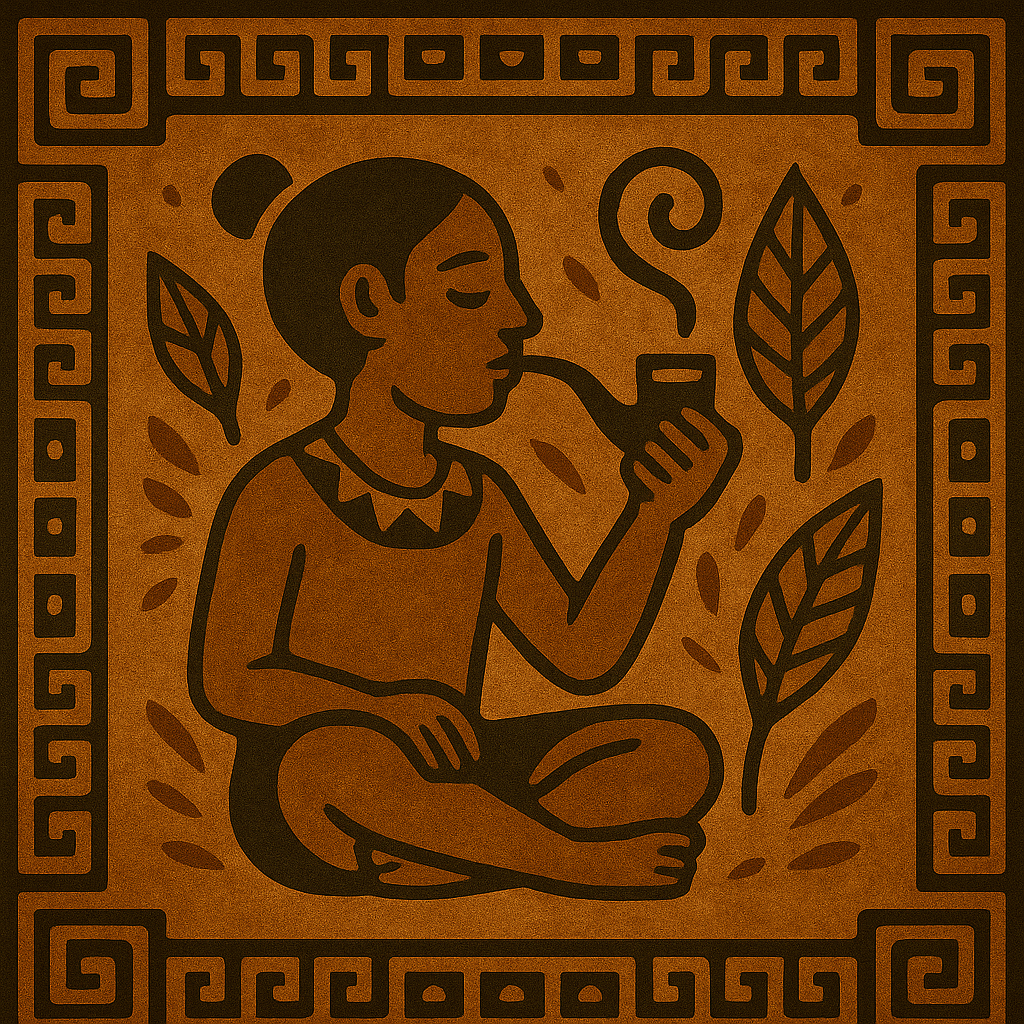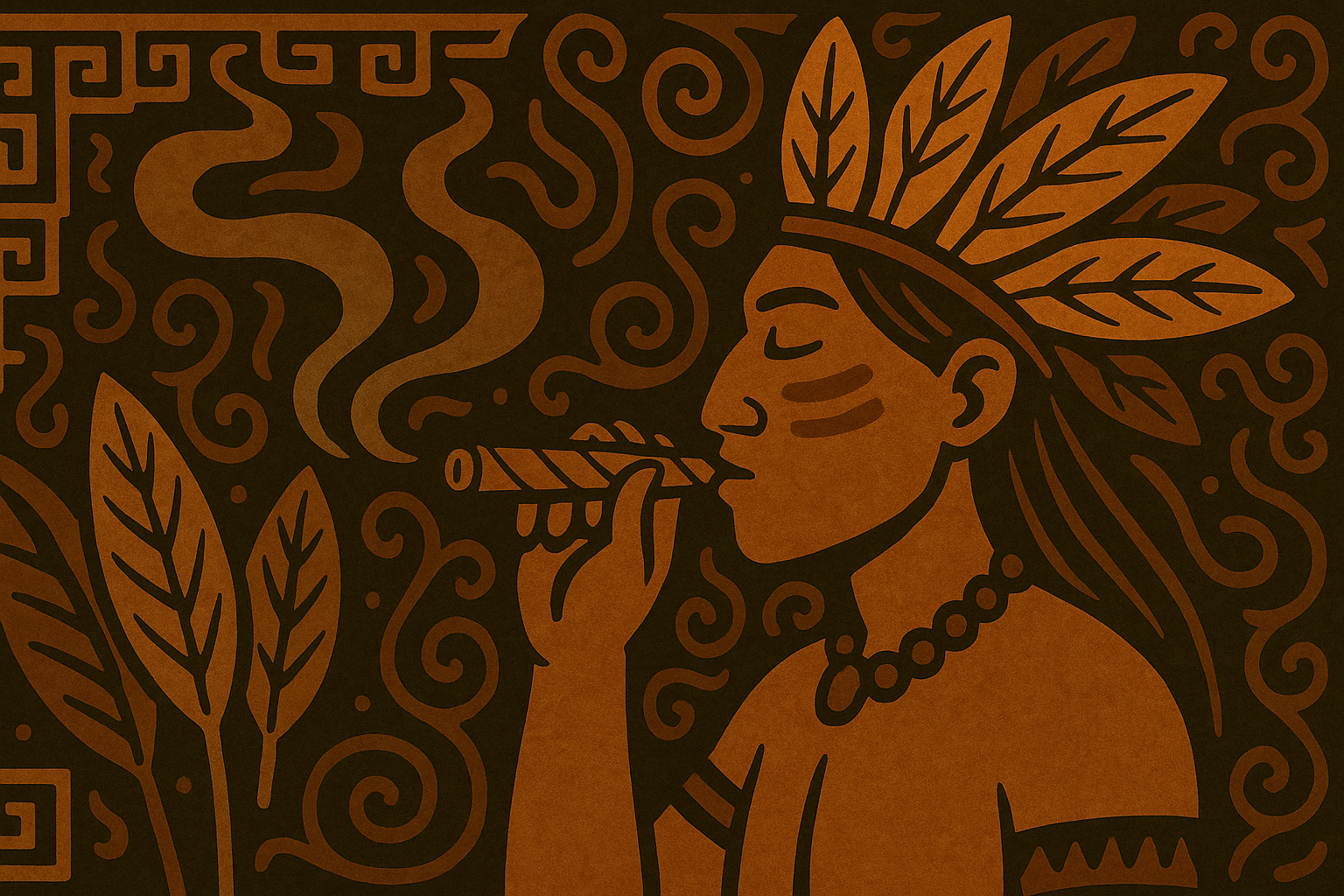Introduction: The sacred essence of smoke
The smoke has always held a mystical role in ancestral traditions. It rises, transforms, and connects worlds — the physical with the spiritual, the self with the cosmos. When we speak of hapé smoke, we are not referring to the habitual act of smoking as known in the Western world, but to a profound ritual component of Amazonian medicine.
In indigenous cosmologies, hapé (rapé) is a sacred snuff made primarily from Nicotiana rustica (mapacho), ashes of medicinal plants, and other natural ingredients, used to cleanse the mind, open the energetic body, and connect with the spirit world. But what happens when people ask if hapé can be smoked? What is meant by “hapé smoke”? And what spiritual implications does this have?
Let us journey through the smoke, the sacred ashes, and the breath of the forest.
🔥 Can you smoke hapé?

The short answer is: no, hapé is not meant to be smoked. Traditional hapé is blown into the nostrils using a tool called tepi (when administered by another person) or kuripe (for self-application). This is a sacred act, not a recreational or casual use.
However, the confusion around “hapé smoke” comes from different sources:
- People unfamiliar with the medicine may associate all forms of tobacco with smoking.
- There are blends of mapacho or other sacred herbs that are used in smoking pipes or rolled in ceremonial cigars (puro chamánico), but these are not considered “hapé”.
- In modern contexts, some vendors might mislabel or oversimplify the product for marketing purposes.
🌀 The breath as a portal
What defines hapé is not just its ingredients, but its method of administration. The blow — the sacred soplo — represents intention, cleansing, and direction. The nostrils are energetic gates, and the forceful introduction of hapé through the breath bypasses the analytical mind and pierces straight into the subtle body.
In contrast, smoking engages the lungs and has a different spiritual symbolism. While smoke may carry prayers and intentions (as in palo santo or sage rituals), hapé is about grounding, focus, and presence — not dispersion or elevation through smoke.
In essence, hapé is breathed through the nose, not smoked, and that makes all the difference in its energetic imprint.
🌬️ Why people ask if hapé is smoked
The question “Can you smoke hapé?” often arises from people trying to understand how this medicine works. In a world where tobacco is almost exclusively associated with smoking, it is natural for newcomers to assume hapé — being tobacco-based — might be consumed the same way.
But in Amazonian traditions, mapacho (the main tobacco used in hapé) is not just a stimulant. It is a powerful spirit, a protector, a teacher. The medicine is handled with reverence, and its preparation and use are ceremonial acts.
Some reasons why people might associate hapé with smoking include:
- Confusion with other sacred plants like Sananga or Kambo, which also have specific application methods.
- Western commodification, where terms like “smoke,” “snuff,” and “tobacco” are used interchangeably for SEO or commercial purposes.
- Interest in psychoactive effects, assuming that combustion is needed to “feel something.”
Let’s be clear: hapé is not a psychoactive in the classic sense. It doesn’t induce hallucinations or visions. It is a cleanser, a stabilizer, a gateway to inner silence — and that comes through the nose, not the lungs.
🌿 Mapacho, the tobacco spirit behind hapé
To understand the essence of hapé, we must understand mapacho.
Mapacho (Nicotiana rustica) is much more potent than common tobacco (Nicotiana tabacum), containing up to 10 times the amount of nicotine. But its strength is not just chemical — it is spiritual. Indigenous elders speak of mapacho as a plant teacher, a spirit of clarity, boundary-setting, and protection.
In its smoked form (ceremonial cigars), mapacho is used by shamans to:
- Clear the space energetically
- Seal the body after intense rituals
- Communicate with spirits through breath and smoke
But in hapé, mapacho becomes the base for a grounded prayer. Its energy becomes inward, meditative, and centering. It is not about vision or expansion — it is about presence and purification.
This distinction is crucial. Smoking mapacho is part of Amazonian ritual — but hapé is never smoked. Its spirit speaks through soplo, not through fire.
🌀 The dangers of smoking hapé
Can hapé be smoked? Technically? You could try to burn it, yes — but you would be completely misusing the medicine. And more than that, you might harm yourself.
Let’s break this down:
❌ Why smoking hapé is not only ineffective but harmful:
- It destroys the sacred properties
The ashes, barks, roots, and leaves in hapé are selected, crushed, and sieved for nasal administration. Burning them alters their composition, burns away the intentions, and disrespects the ancestral purpose of the medicine. - Hapé contains non-combustible elements
Many blends include ashes from specific trees and plants. Inhaling these ashes as smoke can irritate the lungs, cause coughing, or introduce toxins that are safe for nasal use but not for combustion. - It breaks spiritual codes
In indigenous cultures, using a medicine outside its prescribed method is seen as spiritually offensive. Smoking hapé would be like trying to drink incense or inject a prayer — it simply makes no sense in the ritual context. - Health risks of inhaling powdered substances
Powders not intended for combustion can release carcinogenic or toxic substances when burned. Even if hapé is natural, that doesn’t make all forms of administration safe.
🔥 Remember: hapé is a sacred snuff, not a recreational smoke.
🌬️ The true way to take hapé: through the breath of the forest
Hapé is administered through the nose using sacred tools: the kuripe (for self-application) and the tepi (for being served by another). The application is a short, focused blow — known as a soplo — that carries the prayer, intention, and spirit of the forest directly into your energetic field.
This method:
- Cleanses the energetic body
- Stimulates the pineal gland
- Grounds and centers the mind
- Opens the inner space for meditation or healing
No combustion. No smoke. Just breath and presence.
In many ways, the act of receiving hapé mirrors the breath of the jungle itself — strong, alive, direct. It’s a communion between the spirit of the plant and the consciousness of the seeker.
🌿 Join the Sacred Rapé Tribe

We’ve opened an intimate group on Telegram for souls who honor this medicine with respect and purpose. Share rituals, spiritual guidance, and sacred energy in community.
You just need to leave your email to receive access. 🌕 See you within the circle!
🔗 The ritual use of snuff in South America – NCBI (National Institutes of Health)

